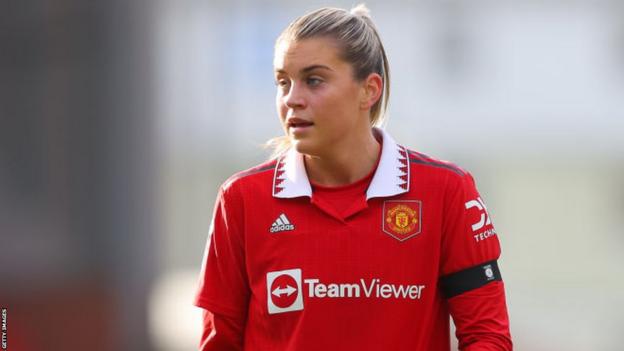

The Football Association has announced plans to ensure every girl with talent has access to high quality training.
England won the Euros on home soil last summer, leading to a wave of interest in women’s football.
But amid concerns about access to girls’ football, the FA is planning to reorganise how the game is run.
Funding from the Premier League will go to recruiting coaches, and the FA has set a lofty target to almost treble the number of girls on the “elite pathway”.
The FA has conducted a full player pathway review over the past three years, looking at the existing structure to try to provide a wide and diverse pool of players ready for senior football.
FA women’s technical director Kay Cossington said that the proposals were part of plans to try and ensure players would not have to go abroad to fulfil their potential.
She cited the example of Alessia Russo, a key player in England’s Euro 2022 triumph who moved to the United States between 2017 and 2019 to play college football, before returning to sign for Manchester United.
Speaking to the BBC at Wembley on Monday, Cossington said: “Pre-2011 and the Women’s Super League, we had many players in America. When we established the WSL, many of those players came back.
“What we try to offer here is for the likes of Alessia Russo to have an education, alongside their playing, offering scholarships to players in clubs is a massive part of that. Otherwise there is always that alternative to go to [the US].”
‘We haven’t even scratched the surface’
The changes will include the creation of Emerging Talent Centres (ETC), previously announced in collaboration with the Premier League in July 2022.
Up to 70 centres will be established to cater for eight to 16-year-olds who show footballing potential.
Since July last year, 56 ETCs have launched with another 11 now confirmed in the coming months, which will replace the existing Regional Talent Centres and Advanced Coaching Centres.
The FA wants the number of young female players in its talent programmes to rise from the current 1,722 to more than 4,200 by the end of next season, and for 90% of ETC players to have a facility within one hour of where they live.
A lack of diversity and opportunity have been long-term issues in English women’s football. The number of black, Asian and minority ethnic players in the England team for a major tournament decreased from six in 2007 to two mixed-heritage players at the 2019 World Cup.
There were three mixed-heritage players – Jess Carter, Nikita Parris and Demi Stokes – in the Euro 2022 squad, but none were part of the starting 11 which went unchanged through the tournament.
It is estimated that the proportion of players in the Women’s Super League is lower – between 10-15% – compared with about 33% of male players in the Premier League.
Arsenal women’s academy manager James Honeyman, who runs one of the existing ETCs, said: “We haven’t even scratched the surface with 1,500 girls, there are that many talented girls.
“The game has always been located in places where you have to come to it, what the FA are doing is putting the game in place for the players. That will unearth talent and find kids in different areas. Then we will see how much talent there really is.”
Also established are Pro Game Academies (PGAs), co-funded by the FA and elite clubs, which will replace current Women’s Super League academies for developing players between ages 14 and 20.